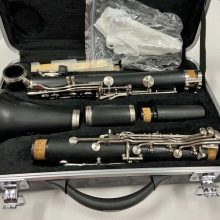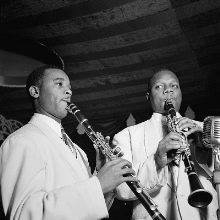All about clarinet
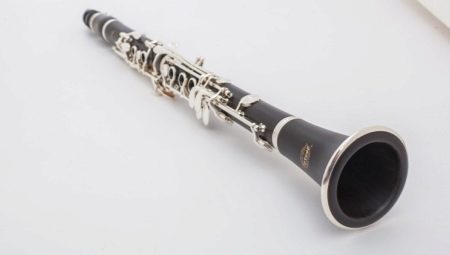
Novice musicians and connoisseurs of everything related to "artistic sound extraction" will be very useful to learn what a clarinet musical instrument looks like, and what it is in essence.
It is necessary to pay attention to how the bass clarinet and other types of woodwind instrument sound. For general development, both a description of the story and an indication of auxiliary accessories are useful.
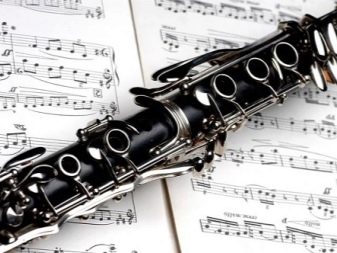

What it is?
Many people, in general, have no idea what kind of musical instrument the clarinet is. The word itself rather evokes associations with a popular tongue twister. However, such an omission can and should be corrected. In general terms, the clarinet looks like an elongated tube of complex shape with a number of additional elements on the outside. The tube is close to a cylinder, unlike oboes and saxophones, which have a tapered body.
It is mainly a woodwind instrument. Most often, expensive elite exotic wood is released for its production. Professionals use just such solutions. At the same time, plastic clarinets with rubber parts can be used for amateurs and for educational activities. Relatively recently, devices made of dissimilar materials have appeared, which, in terms of acoustic properties, are not inferior to advanced models made of wood, but are less sensitive to fluctuations in temperature and humidity. The tool obtained in this way turns out to be noticeably lighter and cheaper.
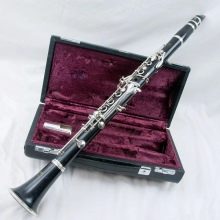
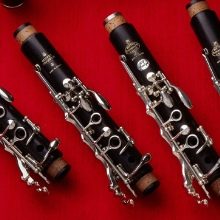
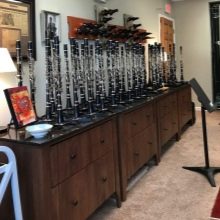
The clarinet reeds are the most significant part of them. Such designs are produced by a number of leading companies. Some of them specialize in canes for beginners, while others are ready to satisfy the request of even an experienced musician.The "power" of such a device corresponds to its hardness. A cane with a French cut is slightly more expensive than an ordinary cane, but at the same time it responds quickly to changes in key when playing.
Experienced musicians usually purchase reeds in sets. This allows you to cover all your needs and not constantly buy new accessories. The clarinet mouthpiece is visually similar to the beak of a bird. Even varying the angle at which this mouthpiece runs has a direct impact on the characteristics of the sound emitted.
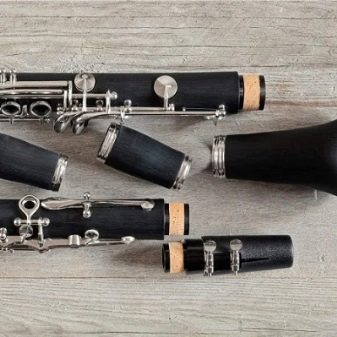

The barrel is the block with which clarinets are tuned. He received such a name for his specific form. Sound holes, rings and valves are found on the upper and lower elbows. The role of the bell is to ensure that the sounds are as low as possible. Back in the 19th century, several valve placement options appeared, and each of them has both strengths and weaknesses.
The clarinet differs from the flute primarily in that flutes do not have reeds. The flute is generally considered to be a lighter and more comfortable instrument. The air is blown out in it not through the tip, but from the side. In an orchestra, clarinetists amplify the bass sound. If they are trusted to perform separately from other instrumental musicians, it is mainly to create a disturbing and gloomy mood in the musical narration when voicing the tragic moments of the plot.
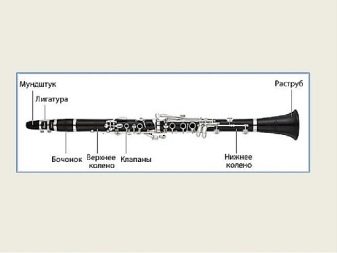
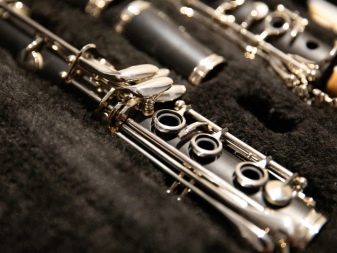
Origin story
The clarinet was invented by the German master Johann Denner at the very end of the 17th century. He, like many other inventors, had a number of predecessors. And yet it was Denner's development that turned out to be complete in its perfection. It was she who became a complete example of classical clarinets. This design - in an extremely general form - is preserved to this day. It is curious that the Nuremberg master himself started from the old French instrument known as the chalumeau. He added a valve on the back, something that earlier specialists did not think of (or could not do).
Denner did not rest on his laurels, and continued to improve the invention until 1707. His models only had one valve. Multivalve models are known later; Whether Denner tried to create such designs is not known for certain. Initially, clarinets were received coolly in the world of academic music. Only after a while they were appreciated. The outstanding clarinetist Ivan Müller made major improvements to the instrument in the 19th century. It was after his innovations that the very format that is familiar to modern musicians has turned out. This alone allowed the clarinet to become one of the most advanced and popular concert instruments in the world.

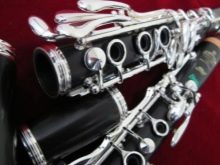

Sound
A typical clarinet sounds like the musicians say, in B... This musical structure allows you to play both folk melodies and pop compositions. The performers can adjust the pitch themselves using the valves. Clarinetists play jazz quite successfully. The range of sounds starts from E in the lower octave to G in the 3rd octave.
The clarinet tone is rather soft. In the hands of a skilled performer, such an instrument manifests itself at its best. Anything above the C note in the 3rd octave is considered high. In this part of the range, the sound is relatively harsh and even somewhat loud. At the middle level, a typically light and transparent sound, in the lower part of the range, depending on the speed of the game, either a simple dark sound or with some metallic tinge is obtained.
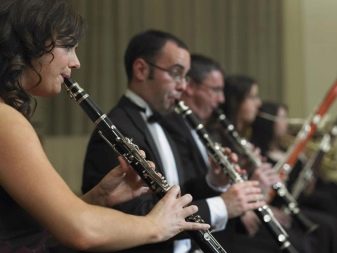
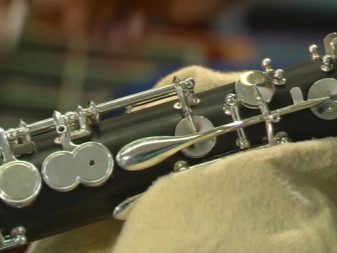
Views
Already in the middle of the 18th century, having appreciated the capabilities of the clarinet, they began to try to create an instrument similar to it, playing the bass. The earliest examples of this kind are close to basset horns. At the end of the same century, the efforts of the developers were aimed at imitating bassoons; it is believed that these bass clarinets were supposed to supplant the bassoon in military music. The modern bass clarinet format has been around since the 1830s; its developer was Adolf Sachs.Such an instrument has already become a full-fledged part of symphony orchestras, and is sometimes even used in solo episodes.
The bass clarinet, according to the view of the new Viennese school, is also used in chamber ensembles. When the period of the musical avant-garde begins, its solo significance grows. Some performers take such an instrument even for jazz compositions. There are no differences in playing technique from the usual variant. Some of the compositions require a higher level of skill when using the bass clarinet.
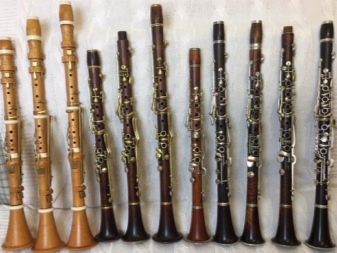
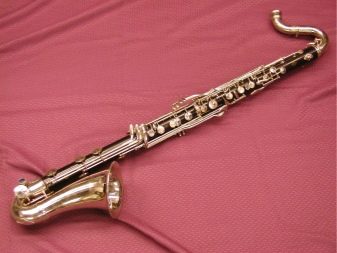
The small clarinet is also often called the piccolo clarinet. It has almost the same structure as a regular one, but is small in size. The characteristic feature is a sharper timbre. There is a slight loudness, most noticeable in the upper range. Small clarinets are typical transposition instruments; their variation in D is used extremely rarely and only for non-standard tasks.
The in As modification is used occasionally in Italian military bands... In Austria it is used by dance music groups. Small clarinets entered orchestral practice thanks to Berlioz. It mainly supports the upper voices in the overall sound of the orchestra. And also he is entrusted with small musical episodes.
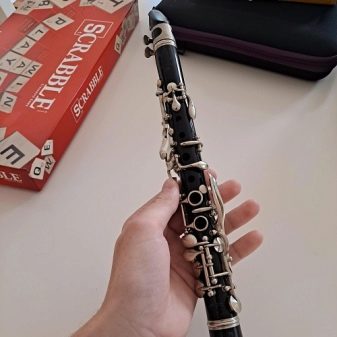
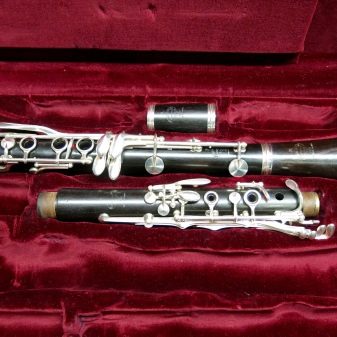
There are other varieties, including the alto clarinet (alto clarinet)... The key Eb is typical for him. This is a kind of intermediate position between soprano clarinets and bass clarinets. Outwardly, the instrument looks like a basset horn, but its lower range is not so wide. It is believed that such a product was developed jointly by Ivan Müller and Heinrich Grenser, although there is a version that it was created in the United States. Some improvements were made to the design by the already mentioned Adolf Sachs.
The B flat clarinet is the same classic type with in B tuning. Composers should write parts for such an instrument a large second higher than the actual timbre. In low register it is possible to demonstrate real expressiveness, to show all the meaning of dynamic shades. The middle register is characterized by a weak sound and less bright timbre.
When you select the upper register, the sound becomes brighter and more juicy, but if you get too carried away with it, an unpleasant loudness is revealed (which can reach the loss of typical clarinet nuances).
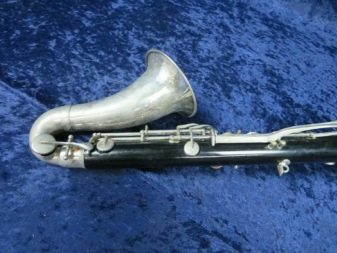
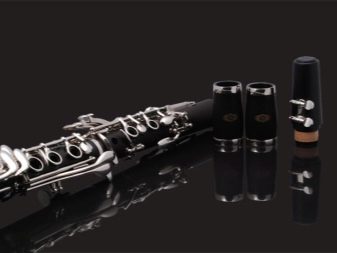
Materials (edit)
If you look at any of the cheapest clarinets on the market, they are no doubt made of plastic parts. This solution makes it possible to significantly lighten the structure. However, consumers will pay for the immediate savings with insufficient durability of the product. And if this problem can still be circumvented through extra careful handling, then nothing can be done with a bad sound.
The set of delivery of any such instrument usually includes leather pillows. The mid-range clarinets themselves have a composite composition. They are based on ebonite or carbon fiber. Sometimes other composite substances are also used. In terms of durability, such a solution is also very good, it is relatively inexpensive, and can suit both beginners in music and professional clarinetists.
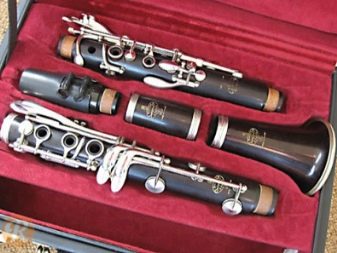
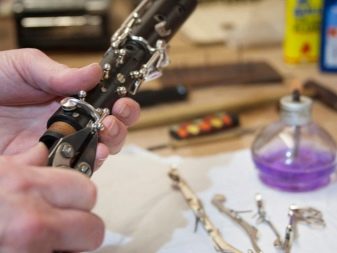
The most expensive models are made entirely of wood. Boxwood, grenadil, rosewood and other elite breeds are used for their production. Such substances provide free resonance and unique sound. Mouthpieces can be made from:
- plastic;
- ebonite (the most popular option now);
- Ivory;
- wood;
- durable brands of glass;
- ferrous or stainless steel.
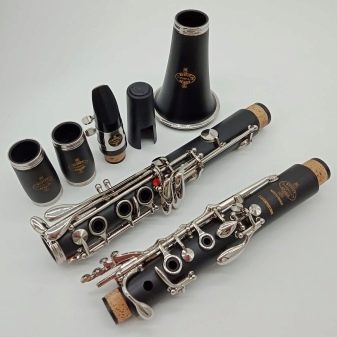
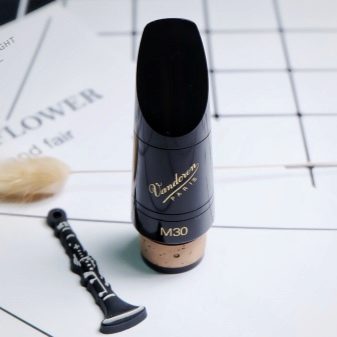
Optional accessories
Mouthpiece stickers are available for clarinets. They are available in narrow and wide versions. Sometimes they buy universal caps for mouthpieces, which fit regardless of the ligature, of the material of the mouthpiece itself. Thanks to the cap, the cane will be insured against breakage. Tool care wipes are made of absorbent fabrics, usually supplemented with sewn-in ribbons.
This consumable removes moisture and blockages without leaving any trace.The laces with metal weights will increase the ease of use. Clarinetists don't go without lubricant for a special cork, which is usually supplied in the same way as a simple lipstick.
Too frequent use of the lubricant is not recommended, one must be guided by the condition of the plug. To transport and carry the tool, to store it, it is more correct to purchase a single or paired case.
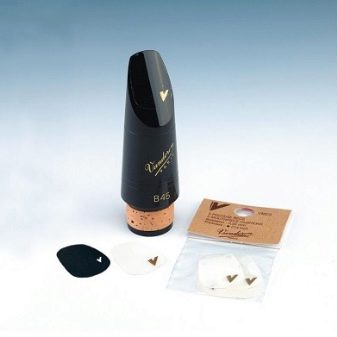
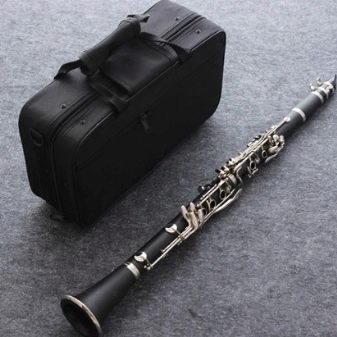
Top manufacturers
- Suitable for serious stage performances and participation in orchestras Luis Rossi Rossi. Bb... It has a verified B-flat tuning. The basic scope of delivery is sufficiently detailed to ensure that basic needs are met. The holes are very cleverly arranged, and the important parts are hand-made. The only downside will be the high cost.
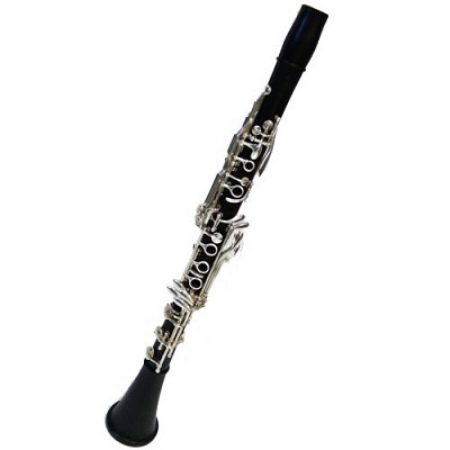
- Buffet Crampon Festival А can be a great alternative. The ebony body will delight discerning customers. Professional musicians worked on the model. The sound will be quite deep. The package bundle is well thought out, and only a heavy case spoils the impression.
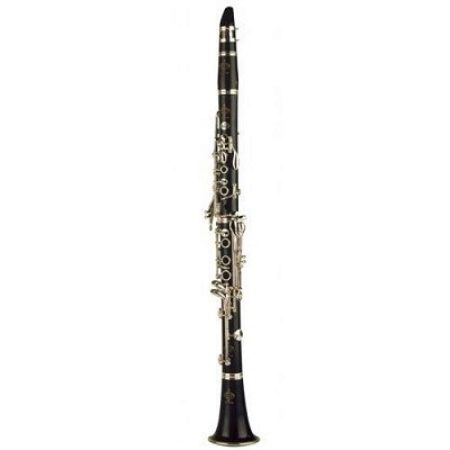
- When choosing a clarinet with a Boehm system, you should pay attention to Patricola PT. CL. 2V-RW. It has 17 valves. This model is also intended for experienced musicians. It is made from seasoned rosewood. The delivery set includes a pair of barrels with different sound patterns and a comfortable case.
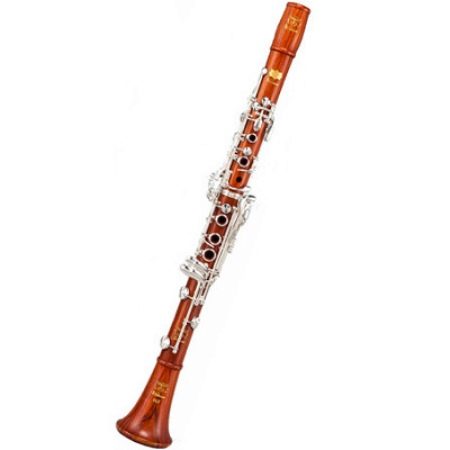
- In the semi-professional segment, the model stands out Yamaha YCL-450 (02)... Such an instrument is quite sensitive. Sounds are well projected. The keys are quite ergonomic, if you wish, you can purchase a copy with the left lever Eb. For the manufacture of the case, grenadil wood is used, and all keys are silver.
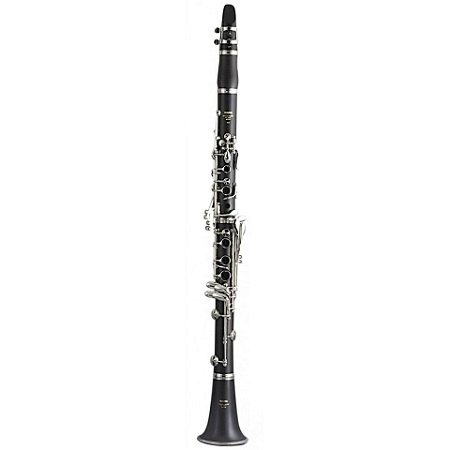
- Young clarinetists may like Roy Benson CG-521. It also has a grenadyl body. The delivery set includes a couple of barrels. The mechanics are designed for small hands, and the thumb rest is easy to adjust. The assembly can be quite tricky at first.
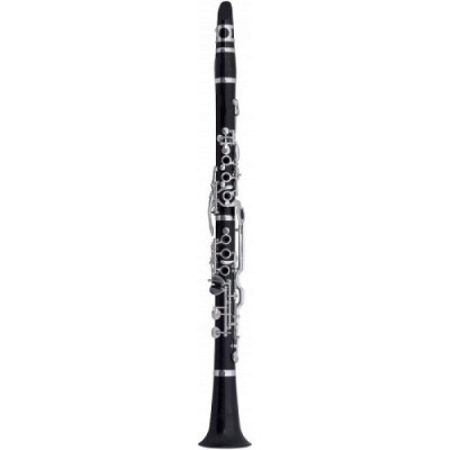
Selection Tips
It is helpful to be guided by expert recommendations and reviews, but not enough to choose a good clarinet. Only a durable instrument will suit those who are ready to take music seriously, and not just hang it on the wall for prestige. It is also important to pay attention to the purity of the sound. It is better to get used to a great timbre from the very beginning. Contrary to popular belief, both the cheapest and most expensive copies are not for beginners.
Models for inexperienced musicians may well be made of plastic. There is nothing wrong with that, as long as everything is picked up correctly. Children are better off not buying a tool without a belt until they can handle it correctly. In the store, you should ask how much the repair will cost and what conditions are there under the warranty.
In general, it is useful for those who do not know anything about music to go shopping with a teacher or an expert; it is also necessary to check the package contents.
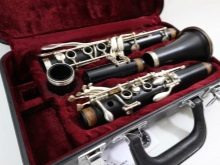


Interesting Facts
The ancient ancestor of the clarinet is a wide variety of woodwinds, used by the ancient Egyptians about 4,000 years ago. The instrument got its name because of its sound, which was close to the sound of the old trumpet clorino (or "clarino"). Even in the 21st century, clarinets are created mostly by hand by skilled craftsmen; making them on an assembly line is almost impossible. The modern design was worked out to the smallest detail about 100 years ago, and only the mouthpiece and reeds are sometimes still being improved. The clarinet has a range of about 4 octaves, it can flexibly change the dynamic line, it is able to play a barely audible "pianissimo", but bright sounds are available to it.
Although Mozart is associated more with the violin, he began to write for the clarinet earlier than other composers. Then the baton was picked up by Schubert and Beethoven, Tchaikovsky and Rachmaninoff, and many other big names. At the beginning of the twentieth century, clarinet music became an important part of jazz, and by the 1930s it only increased in importance.In the 1970s, many ensembles tried to play the works of the past two centuries on authentic instruments, which revived interest in the clarinet. Its sound was eagerly used by world-class musical groups.

